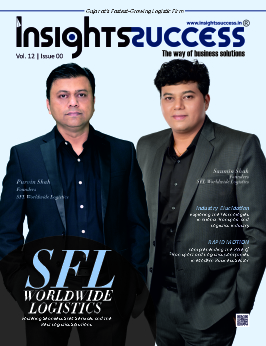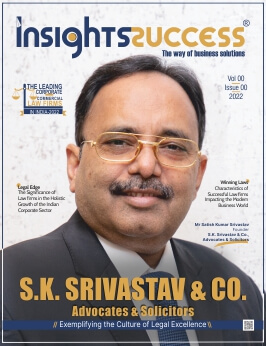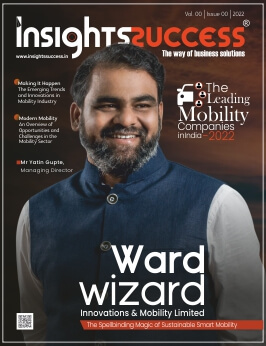Learning and teaching are two sides of the same coin––the coin of education. Learning is the tail side and teaching is the head side of it. Although learning can happen without the act of teaching; teaching cannot happen without the constant act of learning. So the teacher must be learning for their lifetime. Nonetheless, learning without a well-trained teacher is akin to a ship without a capable captain navigating the treacherous currents of life, on the verge of sinking whenever the water becomes turbulent.
Saraswathy Ramamoorthy, the Co-founder, and CMO of Learning Matters experienced it first-hand when she worked exclusively and extensively in the education domain for 20+ years. She shares, “My forte is early childhood education and child development and I started my career managing preschool classrooms and training ECCE teachers. My early years of work in this space taught me the importance of keeping the learner’s developmental stage and abilities at the forefront when designing educational programmes. I also understood how important it is to train teachers to understand best practices in teaching and to equip and enable them to teach such that their students can learn effectively. I then moved into working in print curriculum development and production at KinderCare Education, a leading education company in the USA, as well as in digital content development at Pearson, India.”
When Saraswathy along with Ramamoorthy G (Co-founder and CEO), and Gowri (Mahesh, Co-founder, and COO), came together to co-found Learning Matters, they were very certain that they wanted to address the foundational challenges in the Indian education space – lack of quality teacher training and the lack of access to affordable but pedagogically-sound digital tools due to the cost factor and the stark urban-rural divide. “We designed learning solutions keeping in mind these two vital challenges and created our innovative products – the StarTeacher teacher-training programme and Tara – a virtual voice teacher-powered by AI,” she informs.
Their educational products and solutions are designed to improve teacher competency and student learning outcomes. Each of their solutions fulfills a specific need in schools, as outlined below.
Tara – A Virtual Voice Teacher
There is a severe shortage of qualified teachers in tier2/tier3 schools. Many are single-teacher schools, leading to a highly-stressed education system. Even in schools that have a satisfactory number of teachers, the student-to-teacher ratio is very high, with one teacher managing almost 45 students in a class, on average. This brings down the efficacy of the whole teaching and learning process. “This is the pain point that we are solving with Tara who is an efficient teaching assistant,” says Saraswathy.
Additionally, teachers do not speak in English even in English medium schools because of their own lack of exposure to the language. This affects the students’ ability to comprehend other core subjects leading to an overall downward spiral in learning outcomes. Tara addresses this specific pain point with the communicative English course that she delivers to both students and teachers. “She” is an intelligent and powerful combination of a voice-enabled device (such as Amazon Alexa®) with content created by experts in Learning Matters. Tara teaches learners how to effectively communicate in English through a combination of lessons that include listening, speaking, reading, and writing. “Schools need only the device, internet, and our books to get started. Tara does the rest,” reveals Saraswathy.
StarTeacher:
The lack of well-trained teachers is a debilitating problem in India. StarTeacher is a teacher-training programme that uses a blended delivery model to render it effective. Teachers are trained through video conferencing sessions, and one-on-one personalized calls with a master trainer, and also receive customized videos and information of interest through WhatsApp groups. This personalizes the training and makes it meaningful to each teacher.
Sarawathy adds, “We also conduct webinars for educators and education leaders on a wide range of topics ranging from online teaching to incorporating digital tools in teaching.” These webinars fulfill a huge need for ongoing professional development on current, relevant topics for teachers.
She says that two of their learning solutions that are highly in demand are StarTeacher and Tara. There is a great need for customized, comprehensive, and holistic teacher training and upskilling and StarTeacher fulfills this need. Hundreds of students across India have started conversing in English within a month after learning from Tara. “Our interactive English voice teacher has been an instant hit among both teachers and students as we have content specially designed for these diverse age groups,” she says. Moreover, the content is aligned with the CEFR (Common European Framework of Reference for Languages) and teaches learners through a conversational mode that is natural, engaging, and fun. To top it all, learners learn in a judgment-free environment that is totally free of intimidation and fear.
Because Tara is extremely light on hardware, requires minimum bandwidth for usage when compared to video-based learning, and does not intimidate learners who aren’t as tech-savvy as others, Tara is a very practical and attractive choice for schools all over the country.
She conveys, “Our StarTeacher programmes teach teachers best practices in teaching and pedagogy, classroom management, assessment, and remediation.” It is…
A Holistic and Comprehensive Upskilling of Teachers
…designed to enable them to teach better, thereby enabling students to learn better and more effectively.
She recalls that the pandemic has helped them realize the true potential and scope of distance learning but it has also demonstrated the severe inequity in access to the internet and basic infrastructure without which distance learning will remain a dream for many. If these can be taken care of by thoughtful implementation and collaboration between the government, private organizations in Ed-tech, and the big daddies of telecommunication and internet services, “Distance learning can truly be impactful in our country,” she says.
According to her, it’s clear that virtual distance learning will be central to learning in some form or the other in the future. Distance learning has a lot to offer than just being a temporary alternative. It’s important to recognize that distance learning is capable of a much more long-term impact than what students experienced during 2020, which was just the beginning.
Online and virtual learning is already evolving quickly and constantly to meet the requirements of the users and adaptability in this sector is much faster than the traditional learning method. Even though not a complete distance learning model, a hybrid or blended virtual programme will definitely be a big part of the future which will let students engage in a mix of in-person and online learning.
Envisioning Intelligently Immersive Education
Artificial Intelligence (AI) is already gaining prominence in education and voice technology will play a big role very soon. Tara, which harnesses AI and voice technology, will play a huge and impactful role in teaching students not just communicative English but other academic subjects. As well, Tara will start to train teachers on best practices in teaching. “We envision a revolutionary and sustainable shift in being able to impact teacher proficiency and student learning outcomes that will be both scalable and impactful,” says Saraswathy, adding, “One field of education or course that will see huge growth in this decade.”
The surging shift to distance learning during the pandemic has demonstrated that every challenge is an opportunity for positive change. While enormous numbers of teachers and students have moved to online learning, the availability of online learning to an even greater number is questionable due to factors such as internet accessibility, device availability, and cost. The role of affordability of technology in its effective use and adoption then becomes a critical factor. This is where voice technology comes in.
Affordable and effective, voice-based learning has the advantages of being light on hardware, requiring lesser bandwidth than video-based learning, easier accessibility and adaptability (by the learner), and the ability to simultaneously provide a personalized learning experience. It, therefore, has the potential to completely change the way learners learn. Without a doubt, voice technology will see enormous growth in the education sector.





















